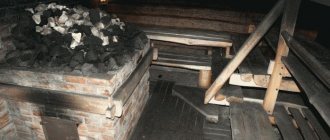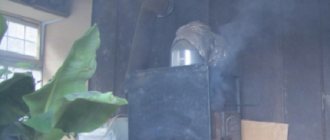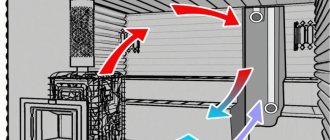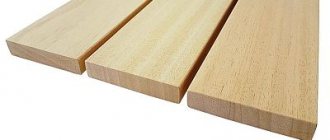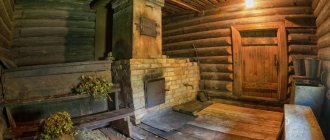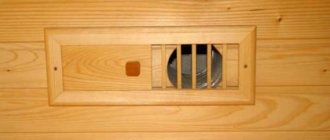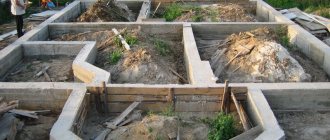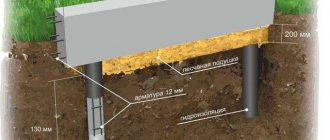Hi all! Brick buildings look good and solid, provided that the front part is made of high quality brick, and the seams are even and neat. But whitish stains, which sometimes appear on the surface of the walls, spoil the spectacular appearance of the building. Next, we will look at the reasons why efflorescence appears on bricks and how to deal with this unpleasant phenomenon.
What is the reason
Efflorescence on a brick is the appearance on the surface of a brick of a thin layer of various salts, which appears for several reasons. Most often this happens when the mortar for brickwork is prepared incorrectly - an excessive amount of water is added or a low-quality mixture is taken. In this case, water will evaporate in large quantities, leaving deposits in the form of salts on the surface. The chemical composition of water and laying bricks in the spring-autumn periods can also affect its appearance, because the abundance of humidity only enhances this process, and hard water, when evaporating, leaves all the microelements on the masonry.
Efflorescence is also a good indicator - if all the requirements were met during the construction process, then the reason lies in the dishonesty of the manufacturer himself. In fact, aesthetics fade into the background here - the main danger is that brick unprotected from salts begins to deteriorate faster and its service life is reduced significantly. There is a common misconception among many builders that before laying bricks, they need to be soaked, so that later, during the process of screeding the brickwork, the mortar will tighten evenly and the bricks will not crack.
Destruction of brick by salts over time Source kronotech.ru
This usually leads to the fact that immediately after drying, a white coating appears on the surface of the brick wall, which only intensifies over time. It is for this reason that quality control of work during the construction of brick buildings is important, which must take place at all stages. Traces of salt migration in hardened concrete mortar are also an excellent marker that the mortar was prepared without taking into account any building codes.
SNIP standards 03.03.01-87 in paragraphs 7.32 and 7.51 clearly regulate this issue: using a solution for facing work with a high content of chemical additives, modifiers and impurities is unacceptable, the alkali content in the solution should not exceed 0.6%, and the mobility of the solution should not be more than 4-6 cm. As for the thickness of the horizontal seam, according to the standards it ranges from 10 to 14 mm and should not go beyond these limits.
If high-quality brick is used (even if it is not simple red brick, but clinker), in acceptable weather conditions, then the problem of efflorescence lies only in the mortar and installation. To avoid the appearance of salts on the surface of the brickwork, you need to use a rigid mortar with an extremely low content of potassium and sodium oxides, or replace it with plasticized hydrophobic cement.
Traces of salts in mortar Source revkz.ru
The mortar should not get on the front side of the masonry, and any mortar that gets into it must be removed before it hardens. During rain, it is better to refrain from laying bricks, covering the brick with plastic film or other waterproof material, and sealing the horizontal seams with jointing before they harden.
In addition, you can also cover the facade with a protective compound or primer. Such measures will prevent the formation of salts due to the evaporation of water from the solution. In the case where salting appears on masonry that has already hardened for a long time, do not despair - the brickwork itself is not subject to destruction, the danger of salts threatens only the surface, which is subject to atmospheric influence and the formation of new salts, and solving this problem is not so difficult.
Why is efflorescence on brick dangerous?
If there is a white coating on the brick, then it must be dealt with immediately if for some reason you have neglected preventive measures. And efficiency here is not at all lost in aesthetic form. The danger lies in many factors.
If you do not get rid of efflorescence on the brick of the house and certain reasons for its occurrence in time, the process will go further, and the salt will begin to crystallize, turning into salty flakes that are toxic to the wall, which experts call “salt corrosion.” The brick is destroyed from the inside, and chips appear on the outside; the process is activated during seasonal temperature changes, which will lead to the destruction of the brick and masonry, and subsequently the entire structure of the building.
Therefore, as soon as you notice a white coating on a brick wall, this is a signal that you need to take a set of measures to eliminate efflorescence.
What can be done
First of all, don't panic. Simple rules will help to avoid salt deposits in the future: it is necessary to store the brick under a canopy, preferably in the shade, in no case allow it to be excessively moistened, use at least washed quarry sand if it is not possible to buy river sand, do not prepare too thin a solution and reduce the amount added modifying additives.
Proper storage of facing bricks will avoid salt deposits in the future Source kirpichrb.ru
See also: Catalog of companies that specialize in finishing materials and related work
To avoid unnecessary suspicions, it is better to play it safe and buy bricks only from those manufacturers who have been on the construction market for a long time and enjoy a certain reputation, even if it is a little more expensive - saving on bricks does not lead to anything good.
Secondly, you need to know how to remove efflorescence on brick that has already appeared. It is not enough to simply water the wall with a hose for the problem to solve itself. Many organizations are engaged in cleaning whitened facades and, for a certain budget, will return the building to its original appearance of beautiful red brick.
If you want to try to remove efflorescence on brick with your own hands, then there is room for experimentation - there are a huge number of brick and alcohol solutions on the market for removing salt on brick. They all have one thing in common: “a product for removing efflorescence on bricks” and any consultant at a construction supermarket or seller at the construction market will tell you which efflorescence agent is best to buy. But which one is really better to use will have to be selected by trial and experimentation, since the chemical composition of salts varies depending on the reason for their appearance.
Violation of the laying process Source stroy-podskazka.ru
It is also worth understanding that not only brick, but also concrete is susceptible to the formation of salts. If water penetrates from the inner layers of concrete into the outer layers or cracks occur, there is a high probability of white salt stains forming on the concrete surface. This happens due to the formation of free calcium oxide during the hydration of cement in the concrete solution, and the water present in the solution carries calcium oxide to the surface during evaporation.
This process will continue until a balance is reached between the solutions, and when the surface comes into contact with air, calcium carbonate will form, which is very difficult to remove. Such formations are removed using substances that can dissolve calcium salts, followed by mechanical action (for example, a brush). Compared to brick, cleaning concrete from efflorescence can be more of a hassle.
How to remove efflorescence on facing bricks? Of course, it is better to use a hard brush, but if these are not obvious salt crystals, but a light whitish coating, then a simple roller will do. After applying with a roller or brush, it is necessary to give the solution time for a chemical reaction, then rinse it all off with plenty of water, let the brick dry, and then be sure to treat it with protective agents against the formation of salts.
Formation of salts on concrete surfaces Source monolit-gr.ru
Removal methods
If stains begin to appear, you need to immediately take measures to eliminate them; you should not put it off for later. There is a misconception that the salt layer should simply be washed off with water. Treating the surface with water will cause the salts to dissolve and move inwards. Such a wash will only worsen the damage to the masonry. Cleaning bricks from efflorescence can be carried out mechanically or using chemical cleaning mixtures.
Mechanical cleaning
Removing stains using mechanical methods requires considerable physical strength. The surface must be thoroughly rubbed with hard brushes until the entire white layer can be removed. With a small area of damaged surface, this can be done.
Advice! If a large area is damaged, you can use a drill with a special brush attachment. This device makes it easier to remove salt deposits.
Great luck - having a sandblasting machine. The work must be carried out competently in compliance with safety rules. Using a compressor, a stream of air with sand is pumped onto the contaminated surface, under the influence of which not only white stains of salt are removed, but also the remains of the concrete mixture, stains of soot, paint, mold, and moss. Work must be carried out wearing a mask and goggles to prevent particles suspended in the air from reaching the mucous membranes.
How to prevent re-deposition of salts
When removing efflorescence from brickwork is completed, it is worth thinking about how to protect the wall from the reappearance of white spots. After treatment with special chemicals, the strength of the building material increases and becomes impermeable to precipitation, however, without a protective coating, these properties will not be preserved for a long time - you need to think about water-repellent impregnation.
On the modern building materials market there is a huge variety of means that allow you to protect the facade of a building from the effects of water, which will give the building a clean and well-groomed appearance for many years.
Brick protected from moisture always looks like new Source roomble.com
How to protect masonry from efflorescence?
First of all, you should use high-quality building material. In addition, the following will help to significantly reduce the risk of whitish streaks:
1. Introduction of special additives into masonry mortar to increase plasticity instead of traditional lime. Such additives are microfoaming agents-hydrophobizers, for the production of which organosilicon compounds, resin, fatty or naphthenic acids are used.
2. Compliance with the wall drying regime. Plastering work inside the house cannot be done until the masonry is completely dry. If a building built in summer is dried from the inside in winter and the walls are simultaneously plastered, due to the difference in temperature and pressure, moisture from the plaster will be forced out into the brick and salt will appear on the outside of the walls in the spring.
3. Protecting masonry from waterlogging. Do not add excess water to the mortar, soak the bricks or leave the masonry in the open air. It is not advisable to carry out work on the construction of walls in the autumn-winter period.
Briefly about the main thing
To make the wall look like new always, and not just in the first months after construction, you must:
- Comply with all technological requirements for choosing a brick and store it under a film to protect it from rain or snow;
- Prepare a solution with a minimum of additives, river (or washed quarry) sand and water purified from salts;
- Observe the climatic and weather conditions of construction, installation and drying;
- Promptly clean the facade from emerging stains and protect the brickwork with a water-repellent agent from exposure to water.
You need to understand the causes and consequences of the appearance of efflorescence, that this is not some kind of problem that appears randomly, but a harsh reality that needs to be dealt with not later, but to organize the construction process in such a way as to avoid the very causes of salt deposits. It depends only on you what the appearance of the brickwork will be.
Ratings 0
Why do they appear?
The appearance of efflorescence is provoked by various reasons:
- Low quality of materials and mortar - use of cheap or porous bricks, water from natural sources, unwashed sand, pre-soaking of blocks when laying;
- Natural factors - low temperature, humid air, salinization of the soil under the house, aggressive precipitation;
- Lack of drains - without them, the walls are not protected from excess liquid.
If salt stains appear, check the roof, drainage system, and repair if necessary. Their malfunction can cause excessive soaking of the brick and the appearance of plaque. Don't forget to insulate the foundation.
How to clean cement deposits and efflorescence
Many people, when faced with such a phenomenon, panic and partly they are right, is this how they imagined their house or fence during construction. But don’t panic, this is all quite easy to solve.
There are two ways:
- Calling a cleaning company that cleans stone;
- Clean it yourself.
- Soap for natural stone. Specifically for stone, do not confuse it with conventional detergents.
- Cement and salt removal agent;
- A stone scraper and a small spatula, for cleaning heavily ingrained and hardened areas;
- Wire brush and regular brush;
- Grinder with a metal brush (recommended to be used only as a last resort, for severely ingrained dirt that a metal brush cannot remove).
Let's start cleaning
- The first thing we must do is wash off all non-surface dust and dirt. To do this, we dilute the soap concentrate for natural stone in water, in the proportion recommended by the manufacturer, and thoroughly wash the brick surface with the resulting solution using a regular brush. And rinse thoroughly with water. At the first stage, it is not recommended to overfill the stone with water so that it dries faster.
- We dilute the cleaning agent concentrate in the recommended proportion and apply it to the surface with a brush and use circular movements (the direction does not matter) to clean the surface. Leave for 5-10 minutes. And rinse thoroughly with water.
- After completing the first two steps, you will immediately notice the cleaning effect, but areas with heavily ingrained dirt will also begin to stand out. To deal with them, pour the undiluted concentrate into a small container and apply it to the contaminated areas with a brush. When applied, a chemical reaction will occur and the concentrate on cement and salt contaminants will foam, but do not be alarmed by this, this is how it should be. Give it 5-10 minutes and begin rough cleaning using a scraper and, if necessary, a metal brush. And rinse thoroughly with water. Let it dry and repeat until the surface is completely clean.
- The main thing is to rinse thoroughly with water after complete cleaning, as chemicals can leave a white residue.
We suggest you read: How to insulate a chimney from wood
There are two types of protection:
- Transparent impregnation for stone. Apply to the surface with a brush 1-2 times. Creates a protective layer on the surface that does not allow water to pass through and counteracts subsequent deep contamination.
- Impregnation with color enhancement and wet effect. The most in demand and popular at the moment. Creates a protective layer and gives the stone a rich color.
Why delete
A visible feature of efflorescence is the unsightliness of the front surface of the cladding. However, a more significant problem with efflorescence is the destruction of the brick structure . The front surface of the material first becomes scaly, and then large cracks form, which lead to the destruction of the block.
In this way, the entire facing masonry deteriorates not only in terms of external characteristics, but also its integrity is destroyed, which leads to a decrease in its heat-saving indicators, protective properties and other qualities.
It is especially important to take care of the brick if insulation is laid between the facing masonry and the load-bearing wall : if the lining is destroyed, the insulation may become unusable, especially if the cause of efflorescence is poor-quality waterproofing.
